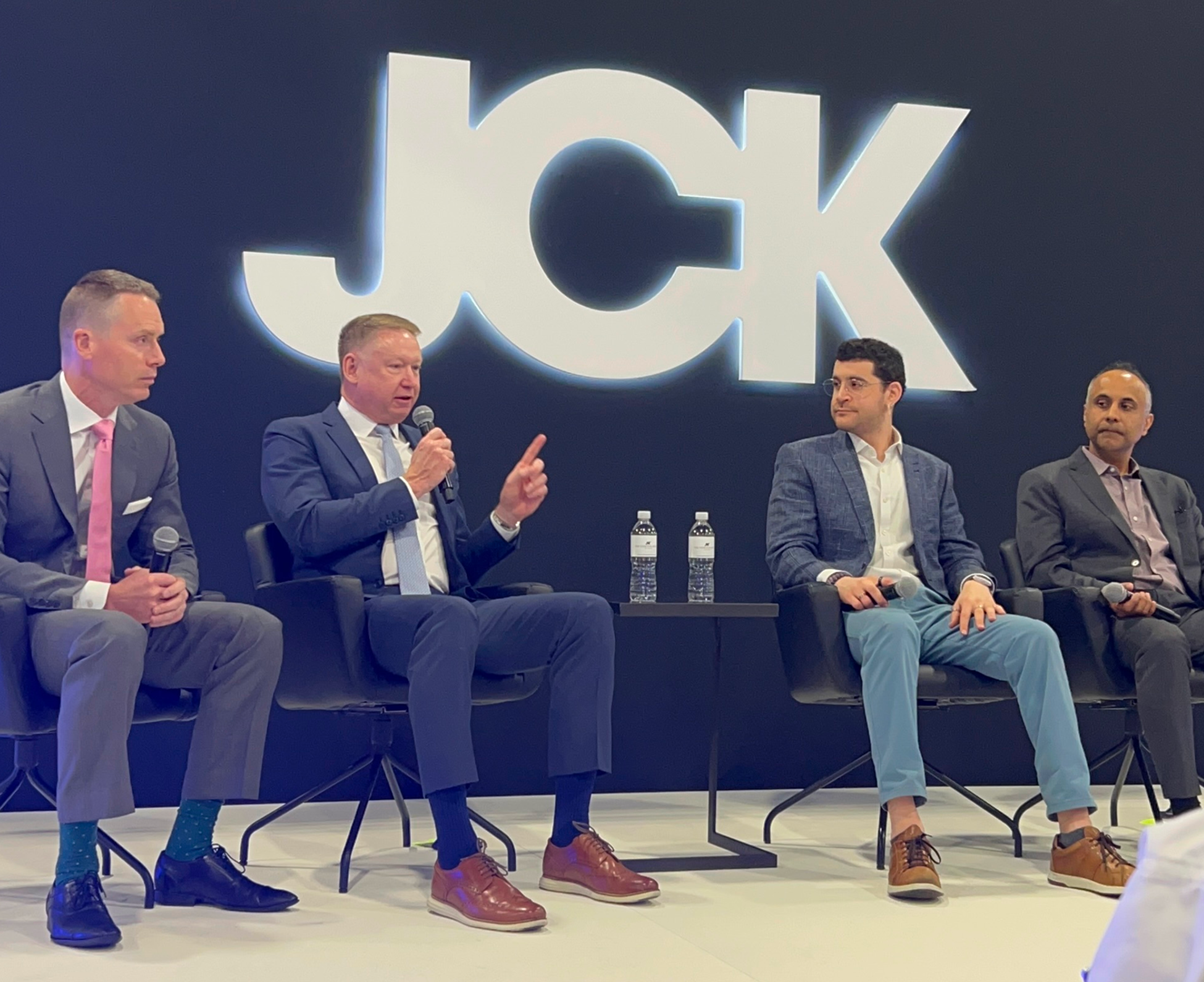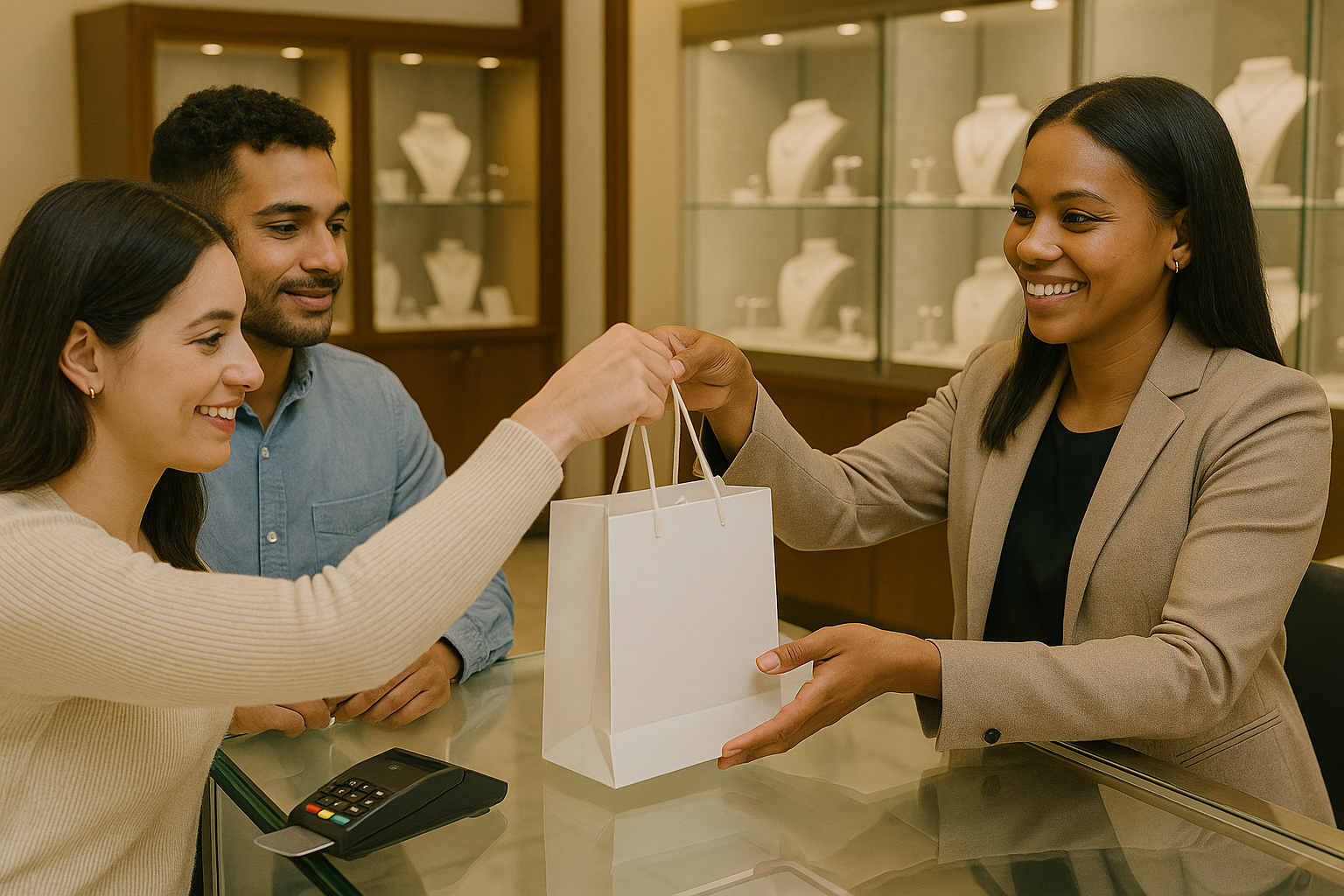Every year at JCK Las Vegas, the world’s largest jewelry industry trade event, some of the most respected voices in the jewelry industry gather to share insights on emerging trends. During one of this year’s JCK Talks panel discussions, Michael Richards—president of Underwood Jewelers, a three-store chain of stores based out of Jacksonville, Florida and longtime Clientbook user— joined a conversation on the state of the colored gemstone market.
From sourcing strategies to shifting customer preferences, Michael offered real-world insights from the sales floor and shared what’s working for Underwood Jewelers today.
Q: How would you describe the colored gemstone market at Underwood Jewelers today?
Michael: I can only provide a very small snapshot compared to others who are looking at the entire U.S. or even the world. But in Jacksonville, our colored stone market is very strong. We sell tons and tons of color, from designers like LAGOS to very high-end pieces.
From the time I’ve been in the jewelry business, I’ve always heard that the colored stone market was a sleeping giant. And over the last five to seven years, we’ve seen that giant start to wake up. We’re selling more and more color on a day-to-day basis.
Q: Which stones are currently top sellers for your store?
Michael: For us in Jacksonville, it’s always been about the big three: sapphire, emerald, and ruby. Sapphire and emerald are our strongest sellers, and lately, sapphire especially has been leading the way. Most of our larger three-stone pieces feature sapphires.
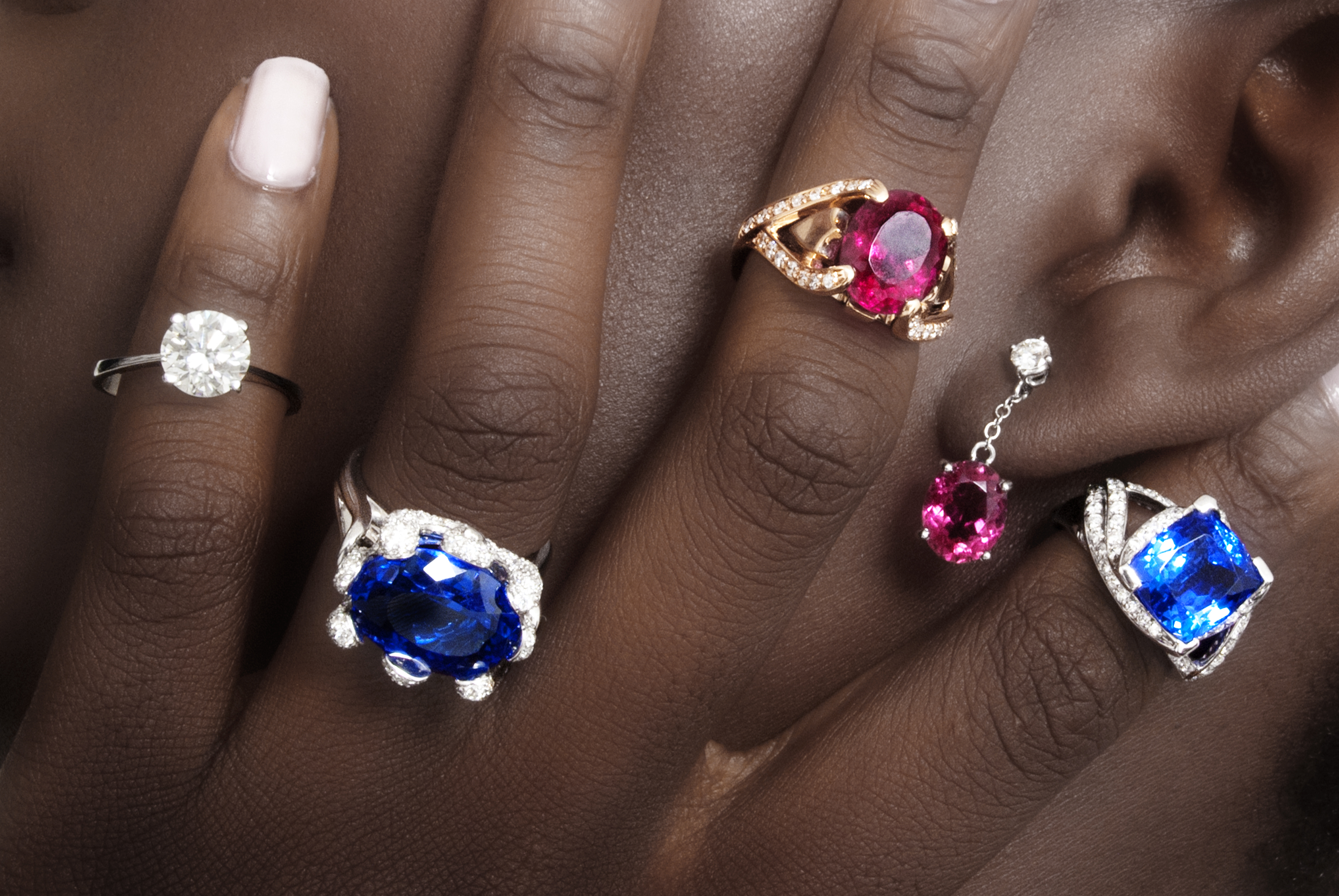
On the flip side, we don’t really sell inexpensive birthstone rings anymore. We used to sell small amethyst or blue topaz rings with tiny diamonds on either side for around $595. Those customers now come in and buy LAGOS or David Yurman or one of the designer lines instead.
Q: Are you seeing colored gemstones being used for engagement rings more often?
Michael: That’s not something we’ve seen a lot of historically, but interestingly, we sold two colored gemstone rings as engagement rings in the last 30 days. One was an amethyst with larger diamonds on either side, and the other was a sapphire.
I can’t say for sure why that’s happening, but I do wonder if the rise of lab-grown diamonds is nudging some people toward colored gemstones for engagement. That’s just speculation, but it’s an interesting trend to watch.
Q: How do you approach sourcing colored gemstones for your inventory?
Michael: Any retailer at this show can call a thousand gemstone dealers and get quoted a price, but in today’s market, those prices are often much higher. That’s why we do our buying once a year at the Tucson gem shows.
It’s gotten harder—we can’t just go back to the same suppliers and expect the best quality and value. We have to look harder, build new relationships, and explore. If you're standing at a booth with someone who just flew in from Thailand or Sri Lanka, and they brought inventory straight from the source, there's still value to be found.
We especially like looking for lesser-known stones. I think moonstone has a lot of potential—it looks great, it’s versatile, and it pairs well with other colors. There are definitely still great-looking stones at good prices if you're willing to work for them.
Q: What role do designers play in the growing popularity of colored stones?
Michael: Designers and branded jewelry lines have played a huge role. They’ve made beautiful pieces with colored stones and put serious advertising dollars behind them. The more people see those ads and those bold, luxurious designs in magazines, the more demand grows.
I think designers are getting bolder with their color combinations, and consumers are responding. They’re flipping through magazines, seeing those pieces, and coming in asking about them. That’s a big part of what’s driven the evolution of the colored stone market.
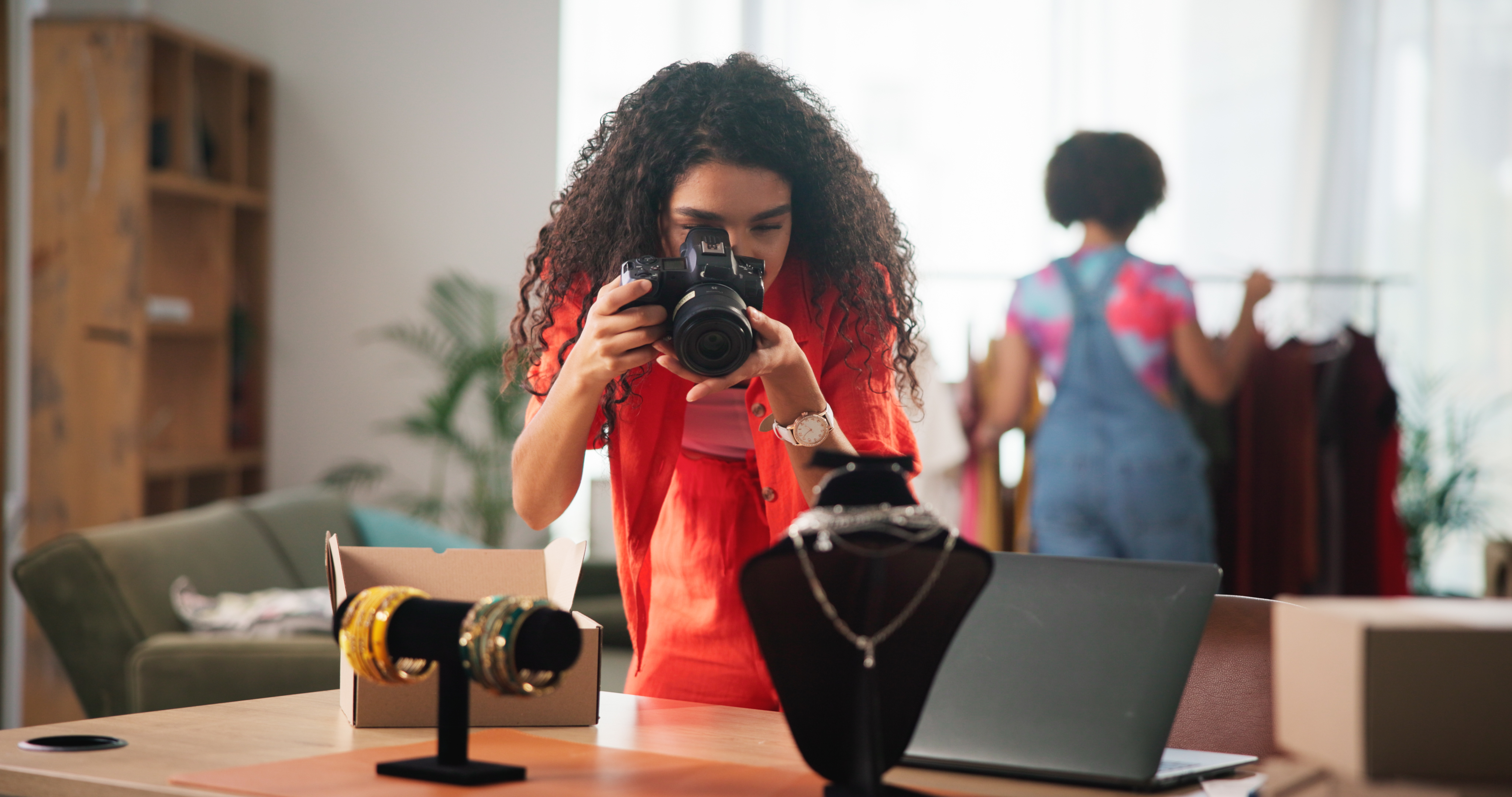
Q: What’s one event strategy that’s worked well for selling high-end color?
Michael: Trunk shows have played a huge role in our high-end colored gemstone sales. We work with a top designer who visits our store twice a year, and each time we try something a little different to keep it fresh.
One of the things we do is a gemstone roundtable. We only invite about 20 people. We show them photos, pass around gemstones, and create this intimate, educational experience. We’ve had days where we sold a million dollars in one event.
These aren’t $1,000 pieces—they’re $50,000 to $60,000 on average. But the key is inviting the right people: clients who already have a diamond tennis bracelet and a few Rolex watches, and who are still in a buying phase of life. When you expose them to beautiful colored gemstones, they buy. That’s been our experience, and I don’t see us slowing down.
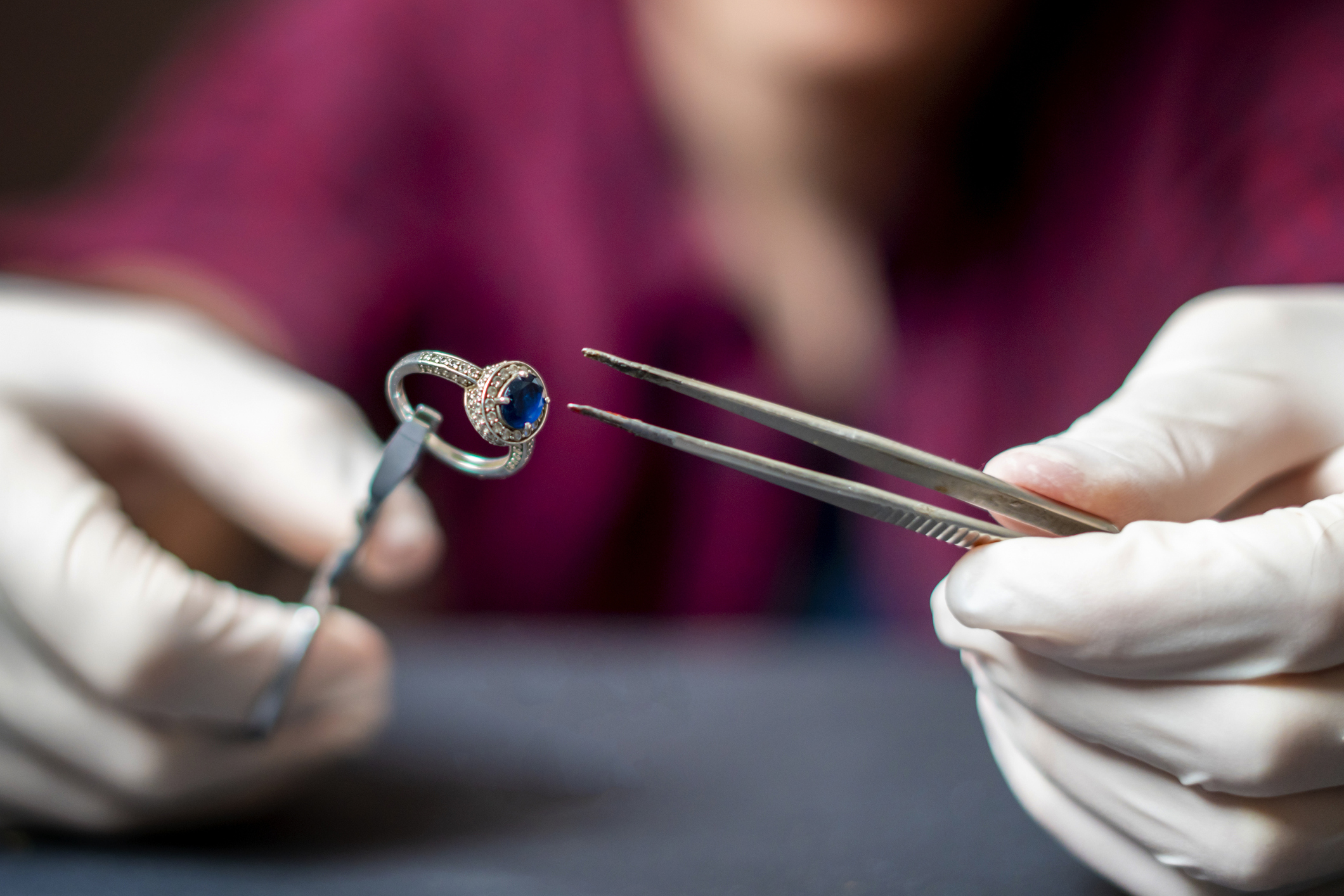
What jewelers can take away
As the colored gemstone market continues to evolve, jewelers like Michael Richards are leading the way by combining curation, education, and experience. Whether through exclusive events or bold designer partnerships, Underwood Jewelers shows that success in this category comes from both strategy and storytelling.

